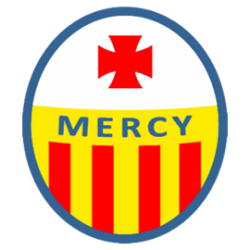Good morning Reception parents and children,
Happy Friday! Hope you enjoy today’s learning.
Communication and Language
Understanding question words using stories

We played this ‘asking questions’ game when we were learning The Gingerbread Man story. We’ve already explored the Jack and the Beanstalk story with lots of reflective questions. I’ve compiled some more specific questions relating to our Jack and the Beanstalk story which will deepen your child’s learning.
- What did Jack’s mother ask him to do at the market?
- Where did Jack meet the lady who gave him the beans?
- What did Jack give to the lady he met?
- When Jack got home with the beans what did his mother do?
- When Jack got up in the morning what did he see?
- How did Jack get into the castle?
- What did Jack do with the gold coins?
- How did Jack get away from The Giant?
- What happened to The Giant?
- What did Jack and his mother do after The Giant fell on their house?
Literacy
Retell the story of Jack and the Beanstalk
Have a go at using your story map and begin encouraging your child to retell the story independently.
Here’s a reminder of how you can develop your child’s story telling skills. Begin by telling the story together. Point to the story map as you retell the story. Once your child seems confident, you can start to withdraw from saying the words. Maybe you can just mouth the words or just keep prompting with the actions. If your child falters in their telling, you can always leap in and keep the story going. Tell your child ‘When I stop, you carry on’. The aim is to move from you being the dominant teller to becoming a listener. Your child moves from being the listener to becoming the teller.
I have sent a transcript of the story through Tapestry under Memos.
Find an audience for the story

As mentioned previously, try encouraging your child to tell the story to someone else. Maybe your child could tell their story to a collection of toys, telephone or Zoom a family member, record the story on your phone (with supervision) or set up a theatre performance.
Letters and Sounds
Today’s new sound – ‘or’ (digraph two letters but one sound)
This video introduces the ‘or’ sound.
The following video supports blending and reading ‘or’ sound words.
Below is the action for the ‘or’ sound.

Show your child how to write ‘or’ using the correct letter formation.

Letter formation for ‘o’ and ‘r’ can be found in your child’s letters and sounds book.
Encourage your child to ‘have a go’ at writing the ‘or’ sound.
For challenge
Only if your child is ready. Write the following words:

For extra challenge
Write a funny sentence and draw a picture to accompany the sentence.


Maths
Build a tall beanstalk

This is a fairly simple game. Use whatever construction toy you have at home. Play together ‘Who can build the tallest beanstalk?’
Make comparisons between your beanstalk and your child’s.
- Whose beanstalk is the tallest?
- Whose beanstalk is the shortest?
- How many more bricks is the tallest beanstalk?
- If you add bricks to the shortest tower, how many more bricks would you need to make the beanstalks equal?
- If you took bricks away from the tallest tower, how many bricks would you need to take away to make them equal?
You could also talk about doubling or add the bricks in each beanstalk together.
British Values

Democracy within the early years is all about teaching children that their opinions are important and that each child’s thoughts and feelings should be listened to and valued. Democracy is also about teaching children that sometimes we are given the power to choose and make decisions as individuals and as a group. Turn taking and sharing all come under democracy, much of democracy is promoted through personal, social and emotional development within your child’s curriculum.
Although this appears to be a fairly difficult concept for children to understand, it is very easy to promote and much of this is done during daily practice at home. Here are some ideas:
Polling station – the family vote for their favourite film to watch, story to hear or snack choice.
Turn taking – play games that involve taking turns, listening to others.
Emotions – help your child identify their emotions and talk about reasons for these emotions. Many emotions will be displayed by children in times when group decisions are being made. Identifying emotions is an important step in children being able to manage their emotions.
Thank you for reading my blog and please don’t hesitate to comment or make suggestions about the blogs through Tapestry.
I hope you all have a fantastic weekend.
Nicola Palmer

